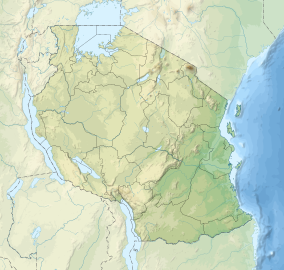Saadani National Park
| Saadani National Park | |
|---|---|
|
IUCN category II (national park)
|
|

Saadani beach
|
|
| Coordinates | 6°00′S 38°45′E / 6.000°S 38.750°ECoordinates: 6°00′S 38°45′E / 6.000°S 38.750°E |
| Area | 1100 km² |
| Established | 2005 |
| Visitors | 15,415 (in 2012) |
| Governing body | Tanzania National Parks Authority |
| http://www.saadanipark.org/ | |
Saadani National Park is Tanzania's 13th National Park. Tourists can view animals basking along the Indian Ocean shores. It has an area of 1062 km2 and was officially gazetted in 2005, from a game reserve which had existed from 1969. It is the only wildlife sanctuary in Tanzania bordering the sea.
Saadani's wildlife population is increasing during recent years after it has been gazetted as a National Park and was a hunting block beforehand. Wildlife in Saadani includes four of the Big Five, namely Masai lions, African bush elephants, buffaloes and African leopards. Masai giraffes, Lichtenstein's hartebeest, common waterbucks, blue wildebeests, bohor reedbucks, common and red duikers, Dik-Diks, yellow baboons, vervet monkeys, blue monkeys, black-and white Colobus monkeys, civets, mongooses, genet cats, porcupines, sable antelopes, warthogs, hippopotamus, crocodiles, nile monitors are also found in the park.
Gazetted in 2005, it encompasses a preserved ecosystem including the former Saadani game reserve, the former Mkwaja ranch area, the Wami River as well as the Zaraninge Forest. In the late 1960s Saadani Village – the village after which the park has been named – and particularly its sub-village Uvinje, invited the Tanzania Wildlife Division (WD) to help them to prevent the indiscriminate killing of wildlife prevalent in the area. From this partnership Saadani village and the Wildlife Division established the Saadani Game Reserve (SGR), with the agreement to respect the land rights of the coastal sub-villages of Saadani, including Uvinje and Porokanya sub-villages, while also addressing the needs of wildlife.
...
Wikipedia

